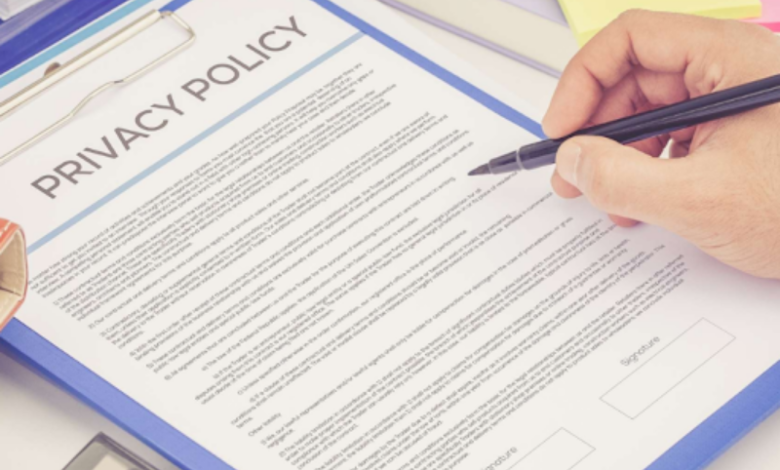How Are Companies Protecting Privacy of Their Employees

In an age where data is king and privacy concerns loom large, companies are under increasing pressure to safeguard the personal information of their employees. From digital footprints to sensitive HR records, ensuring privacy in the workplace has become a top priority for businesses worldwide. But how exactly are companies rising to this challenge? Let’s dive in and explore the strategies and methods utilized to safeguard the confidentiality of employee information.
Understanding the Importance of Employee Privacy
Before we delve into the measures taken by companies to protect employee privacy, let’s first understand why it’s so crucial. Employee privacy encompasses a range of rights, from the confidentiality of personal data to freedom from invasive surveillance. Respecting these rights not only fosters trust and loyalty among employees but also mitigates legal and ethical risks for employers.
Data Protection Regulations: Navigating the Legal Landscape
One of the primary drivers behind the push for employee privacy protection is the ever-evolving landscape of data protection regulations. Legislations such as the European GDPR and the CCPA California in the US impose strict requirements on how companies handle personal data, including that of their employees. Compliance with these regulations isn’t just a matter of avoiding fines; it’s a fundamental aspect of building a culture of privacy and trust within an organization.
Implementing Robust Privacy Policies and Procedures
Central to any company’s efforts to protect employee privacy are robust privacy policies and procedures. These documents highlight the rights and responsibilities of both employers and employees regarding the handling of personal data. They provide clear guidance on data collection, storage, access, and disposal, ensuring that sensitive information remains secure and confidential.
Training and Education: Empowering Employees
Even the most airtight privacy policies are ineffective without the buy-in and cooperation of employees. That’s why many companies invest in comprehensive training and education programs to raise awareness about privacy issues and best practices. These initiatives empower employees to recognize potential privacy risks, such as phishing scams or unauthorized data access, and take steps to mitigate them.
Technological Solutions: From Encryption to Access Controls
Technology plays a pivotal role in safeguarding employee privacy in the digital age. Encryption technologies, for example, ensure that sensitive data remains unreadable to unauthorized parties, even if it’s intercepted. Similarly, access controls limit who can view or modify certain information, reducing the risk of data breaches or internal misuse.
Privacy-Enhancing Technologies (PETs): Balancing Security and Privacy
Privacy-enhancing technologies (PETs) offer innovative solutions for protecting employee privacy without compromising security. From pseudonymization techniques that replace identifying information with pseudonyms to differential privacy algorithms that add noise to datasets to prevent re-identification, PETs are reshaping the way companies approach data protection.
Remote Work Challenges: Adapting to the New Normal
The shift to remote work in the wake of the COVID-19 pandemic has introduced new challenges for protecting employee privacy. With sensitive work data now being accessed from home networks and personal devices, companies must implement safeguards such as virtual private networks (VPNs) and endpoint security solutions to mitigate the risks of data leakage or unauthorized access.
Transparency and Accountability: Building Trust Through Communication
Ultimately, the key to maintaining employee privacy lies in transparency and accountability. Companies should communicate openly with their employees about privacy practices and regularly audit their systems and procedures to ensure compliance with regulations and best practices. By fostering a culture of trust and accountability, organizations can demonstrate their commitment to protecting the privacy of their most valuable asset: their people.
Balancing Employee Privacy with Business Needs: Finding the Middle Ground
While protecting employee privacy is paramount, companies must also balance these efforts with their operational needs. Maintaining the right balance requires careful consideration of factors such as data access requirements, collaboration tools, and regulatory obligations. For example, while implementing strict access controls may enhance privacy, it could also hinder productivity if employees are unable to access the information they need to perform their jobs effectively.
To navigate this delicate balance, many organizations adopt a risk-based approach to privacy management. This involves performing comprehensive risk evaluations to pinpoint possible risks controls and safeguards commensurate with the level of risk. By prioritizing high-risk areas while minimizing disruption to day-to-day operations, companies can achieve an optimal balance between privacy protection and business efficiency.
The Role of Employee Consent and Consent Management
Another crucial aspect of protecting employee privacy is obtaining informed consent for the collection, processing, and sharing of personal data. Consent management systems enable employees to understand and control how their data is used, providing them with transparency and choice over their privacy preferences. By implementing robust consent management practices, companies can ensure that they operate in accordance with legal requirements and respect the autonomy of their employees.
Ethical Considerations: Moving Beyond Compliance
While adhering to legal requirements is crucial, it is just as significant for businesses to contemplate the ethical ramifications of their data management procedures. Respecting employee privacy isn’t just a matter of following the letter of the law; it’s about upholding fundamental principles of fairness, transparency, and respect for individual autonomy. Companies that go above and beyond mere compliance to prioritize ethical considerations not only build stronger relationships with their employees but also enhance their reputation as responsible corporate citizens.
Continuous Improvement: Adapting to Evolving Threats
In today’s rapidly changing technological landscape, protecting employee privacy is an ongoing process rather than a one-time endeavor. As cyber threats evolve and regulatory requirements shift, companies must remain vigilant and adaptable in their approach to privacy management. This involves staying abreast of emerging technologies and best practices, conducting regular audits and assessments, and proactively addressing any vulnerabilities or gaps in their privacy defenses.
Conclusion: A Holistic Approach to Employee Privacy Protection
In conclusion, safeguarding the privacy of employees requires a multi-faceted and proactive approach that encompasses legal compliance, technological safeguards, ethical considerations, and ongoing monitoring and improvement. By prioritizing privacy as a core value and integrating it into every aspect of their operations, companies can foster a culture of trust, respect, and accountability that benefits both employees and the organization as a whole. In an age where data is increasingly commodified and privacy is under constant threat, upholding the right to privacy in the workplace isn’t just a legal obligation – it’s a moral imperative.



